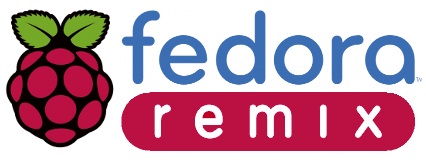Raspberry Pi Fedora Remix Administration

Contents
Fedora-Style System Administration
The Raspberry Pi Fedora Remix is managed in the same way as most Linux systems (specifically, like a Fedora system, since most of the software packages in the Remix come from Fedora ARM).
If you're new to Linux system administration or are coming from another distribution (such as Ubuntu), here are some quick tips on Fedora Remix system administration:
Root Privilege: root, consolehelper, su, and sudo
Linux is designed for use by multiple users. Most users do not have access (privilege) to perform system administration operations or to read other users' files, unless specifically granted permission. This security division also makes it harder for malicious web or e-mail content to exploit a bug to attack the core of the operating system.
The "root" user has full privilege -- she can do anything. There are four ways to gain root privilege:
- Login as "root" and enter the root password. This is useful when you can't log in as any other user.
- Use a graphical application that is hooked into the consolehelper system, such as
system-config-network. You will be prompted for a password (either the user password or the root password, depending on the application configuration) and then the application will run with enhanced privilege. Most of the applications on the Administration menu in the graphical interface work this way. - Use the "su" command to switch users (by default, it will switch to the root user). Type
suand press enter, and enter the root password when prompted. This is useful when you have a number of system administration commands you want to run in a row. However, you must remember to switch back to your regular user account as soon as you no longer require privilege -- to do so, typeexitor press Ctrl-D (for "Done"!). - Use the
sudocommand to switch users for the duration of one command.- To enable use of the
sudocommand:- Run
visudoas root to edit thesudoconfiguration file. - Remove the "#" character at the front of the line that reads:
%wheel ALL=(ALL) ALL - Save the file and exit.
- Add each user who should have
sudoaccess to the wheel group:usermod -aG wheel NameOfUser
- Run
- To execute a command as root, just write "sudo" in front of the command. For example:
sudo yum install inkscape
- To enable use of the
Updating, Adding, and Removing Software
The Remix uses RPM packages with the YUM package manager. This provides a database of all of the software installed on the system, a way to install/remove/update software packages without breaking software dependencies, and network access to remote software repositories.
Adding/removing software with YUM requires an Internet connection.
Package Management from the Command Line
These are the most common YUM commands:
- Update software:
-
yum update packagename# Updates just the one package. -
yum update# Updates all packages
-
- Search for a package by name:
-
yum list packagename# Will match only packagename. -
yum list "*partialname*"# Will match any package with partialname in the package name.
-
- Search for a package by name or description:
-
yum search text
-
- Display information about a package:
-
yum info packagename
-
- Install a package:
-
yum install packagename# More than one packagename may be given.
-
- Install a package group:
-
yum groupinstall "groupname" -
yum install "@groupname"# Useful if you want to install some individual packages and a group at the same time.
-
- List package groups:
-
yum grouplist
-
- List the packages in a group:
-
yum groupinfo "groupname"
-
- Remove a package:
-
yum remove "packagename"# Beware! This will also remove packages which depend on what you're removing. Read the list of packages to be removed carefully before approving it.
-
- Remove a package group:
-
yum groupremove "groupname"<code> - <code>yum remove "@groupname" # Useful if you want to remove some individual packages and a group at the same time.
-
For more information, see the manpage for yum.
Package Management Using the Graphical User Interface
To update software graphically, use the menu option Administration > Update Software.
To add/remove software graphically, use the menu option Administration > Add and Remove Software.
Adding and removing Users
User Management from the Command Line
- Add a user:
-
useradd name# The -m option required on some systems is not needed - the user's home directory will be created automatically.1 -
useradd -c "Full Name" username
-
- Set a password:
-
passwd username
-
- Delete a user:
-
userdel username -
userdel -r username# Caution! This deletes the user's files as well.
-
User Management from the Graphical User Interface
To manage users graphically, use the menu option Administration > Users and Groups
Raspberry-Pi Specific Configuration
The first (FAT) partition on the SD card is mounted as /boot. There are